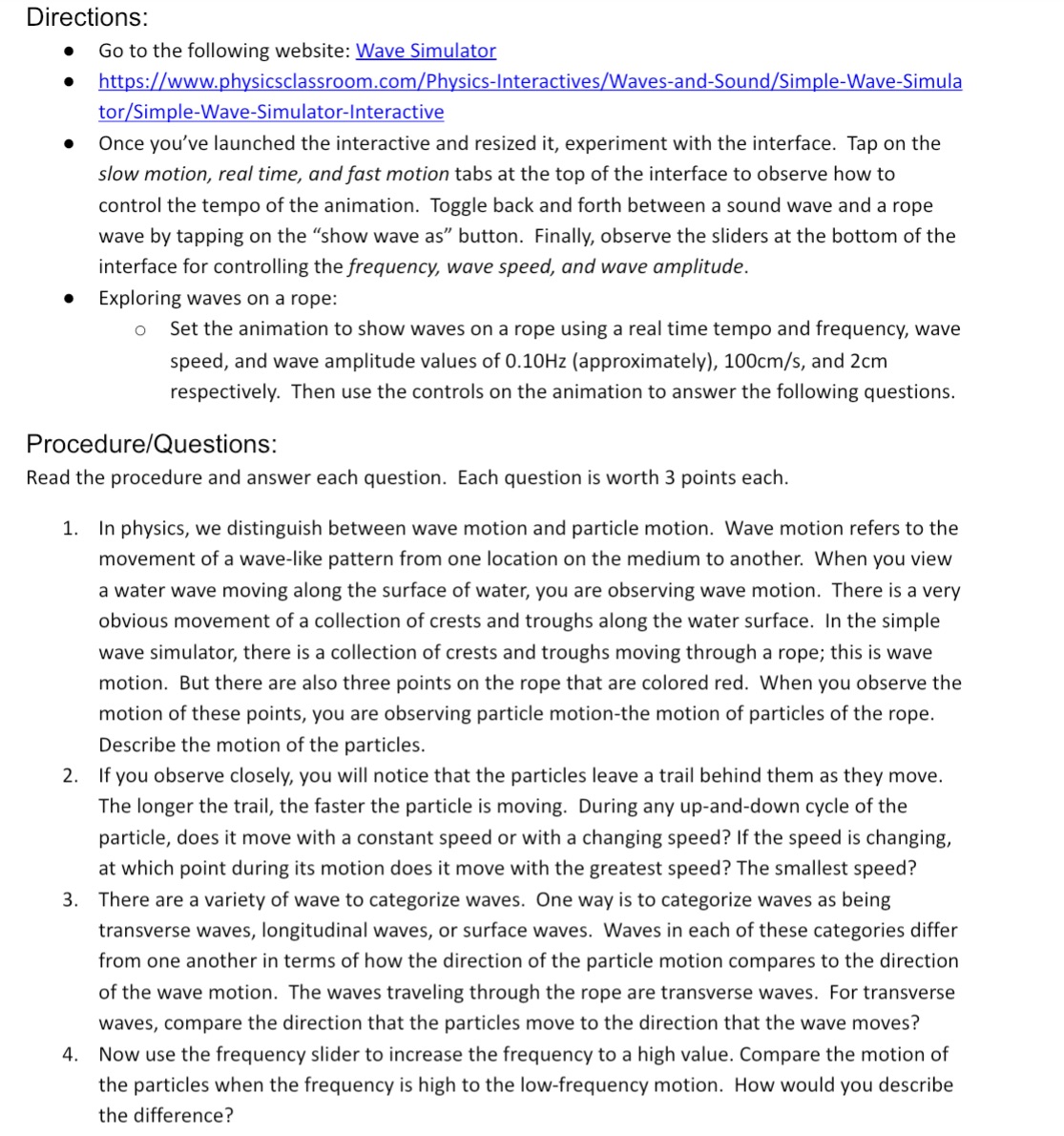Question
Here are the rest of the things 5. The next step is going to take some skill and some careful observation. The wave speed is
Here are the rest of the things 5. The next step is going to take some skill and some careful observation. The wave speed is associated with the movement of crests and troughs along the medium. Faster waves will have crests that move from the left side of the screen to the right side of the screen in less time; that is the crests move from left to right faster. Set the animation to a low frequency (about 0.1Hz) and observe the wave speed. It might help to put your finger or a pen cap on a crest and follow the movement from the left to the right along with the crest. Then repeat for a high frequency (about 1.0Hz). Make The observation of wave speed (the speed of the crest moving from left to right across the screen). Does this ten-fold increase in frequency - from about 0.1Hz to 1.0Hz - have any noticeable and appreciable effort upon the wave speed? Explain your answer and discuss your observations. 6. Does moving the Frequency slider from a low to a high value change the listed Wave Speed in this animation? Yes or No?7. Change the Wave Amplitude from a high value to a low value. In terms of particle motion, how would you describe the difference between a high amplitude wave and a low amplitude wave?8. Does a change in amplitude effect the wave speed? Run two tests with high and low amplitude using a similar procedure used in Question 5. Make a claim and support your answer with evidence.9. The wavelength of a wave refers to the length of the repeating pattern of crests and troughs. Long wavelength waves have crests that are spaced relatively far apart. Short wavelength waves have crests that are relatively close to each other. Use the controls to determine two ways to increase the wavelength of the waves. Describe what you did to increase the wavelength.

Step by Step Solution
There are 3 Steps involved in it
Step: 1

Get Instant Access to Expert-Tailored Solutions
See step-by-step solutions with expert insights and AI powered tools for academic success
Step: 2

Step: 3

Ace Your Homework with AI
Get the answers you need in no time with our AI-driven, step-by-step assistance
Get Started


